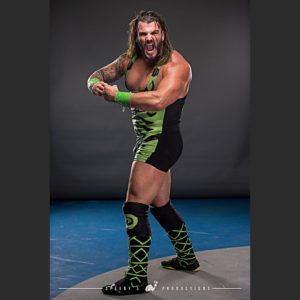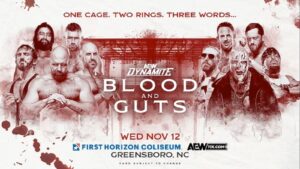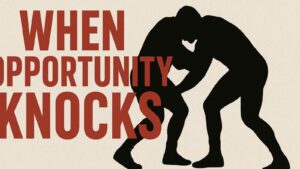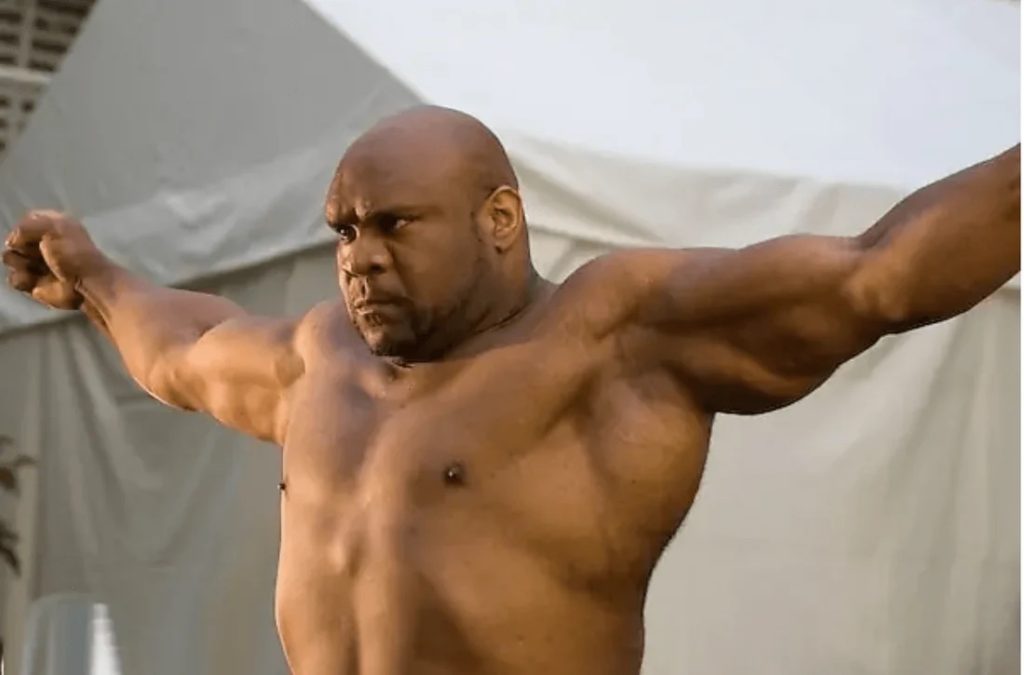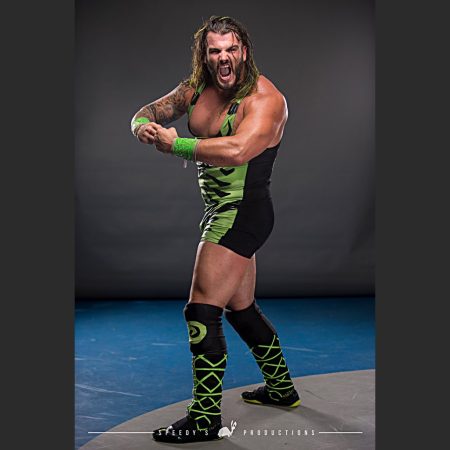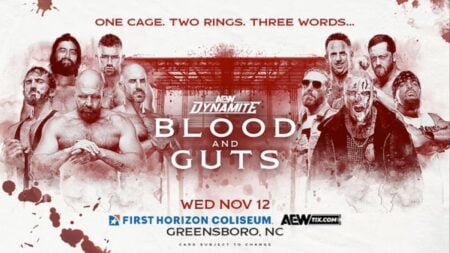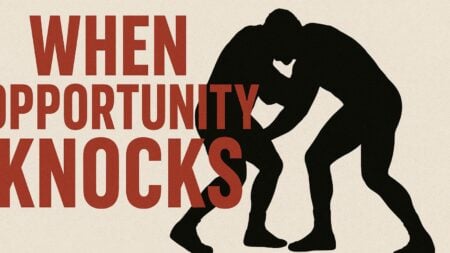Bob Sapp has had a career that he may not have expected to have when he first began his foray into the world of sports.
Stood at 6’5 and weighing in at around 330 lbs, Bob Sapp was the picture of an NFL guard, yet his career took an entirely different path that led to him making wrestling history in Japan.
From guard to gaijin, this is a look at the unlikely pro-wrestling career of Bob Sapp and his martial arts successes that allowed him to become the first-ever African-American IWGP Heavyweight Champion.
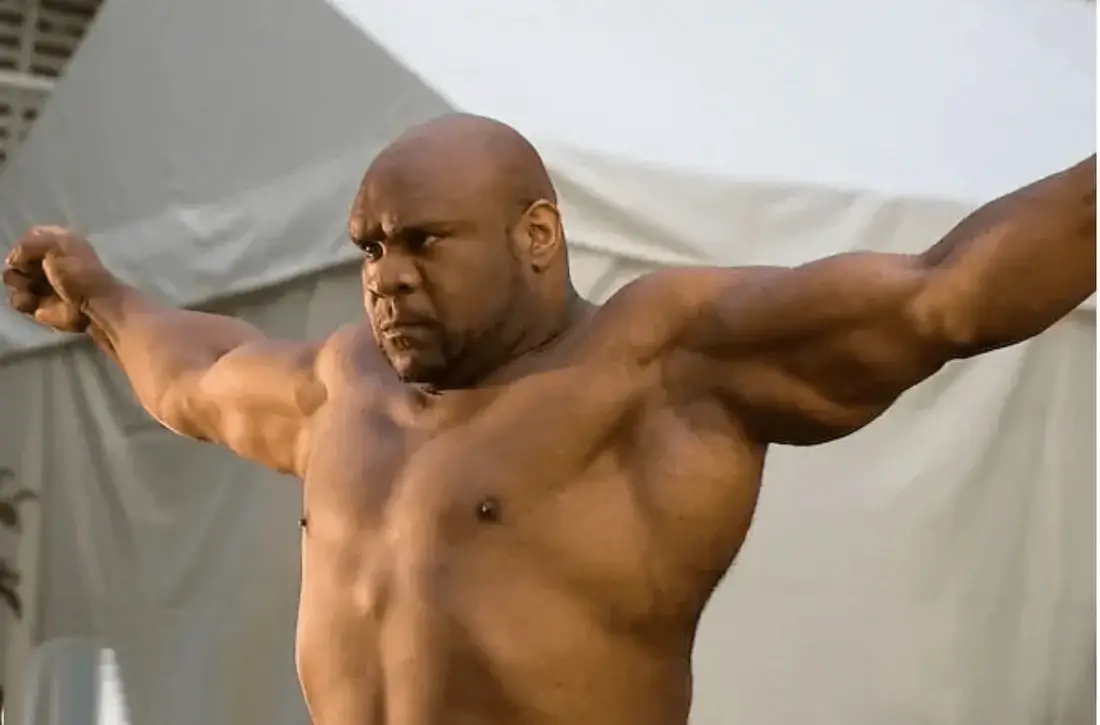
Bob Sapp – A Long Yard
Though known for his in-ring career, be it pro-wrestling or mixed martial arts, Bob Sapp started out playing American Football in the NFL as many other pro-wrestlers did. His road to the NFL started with the Washington Huskies for whom he played college football with as a guard.
The team’s win in the Morris Cup drew the eyes of the NFL’s Chicago Bears, who drafted Sapp as the 69th overall pick in the 1997 NFL draft.
His time with the Bears was short-lived. He did not make a single appearance for the team and was released after a year. Even so, Sapp’s NFL career wasn’t dead in the water just yet.
The Minnesota Vikings took a chance on Sapp and kept him under contract for two years. His time with the Vikings wasn’t much better than his time with the Bears, this time making one appearance and serving a suspension for steroid abuse.
Unfortunately for Sapp, things hadn’t worked out in the American Football scene. Following his release by the Vikings and after being defrauded by his financial advisor, Sapp had to work at a funeral home to earn his money until another opportunity arose.
However, this opportunity would not be in the NFL or any other American Football league. Instead, Bob Sapp would make a start in professional wrestling after being advised to do so by his friend and Vikings long snapper Mike Morris.
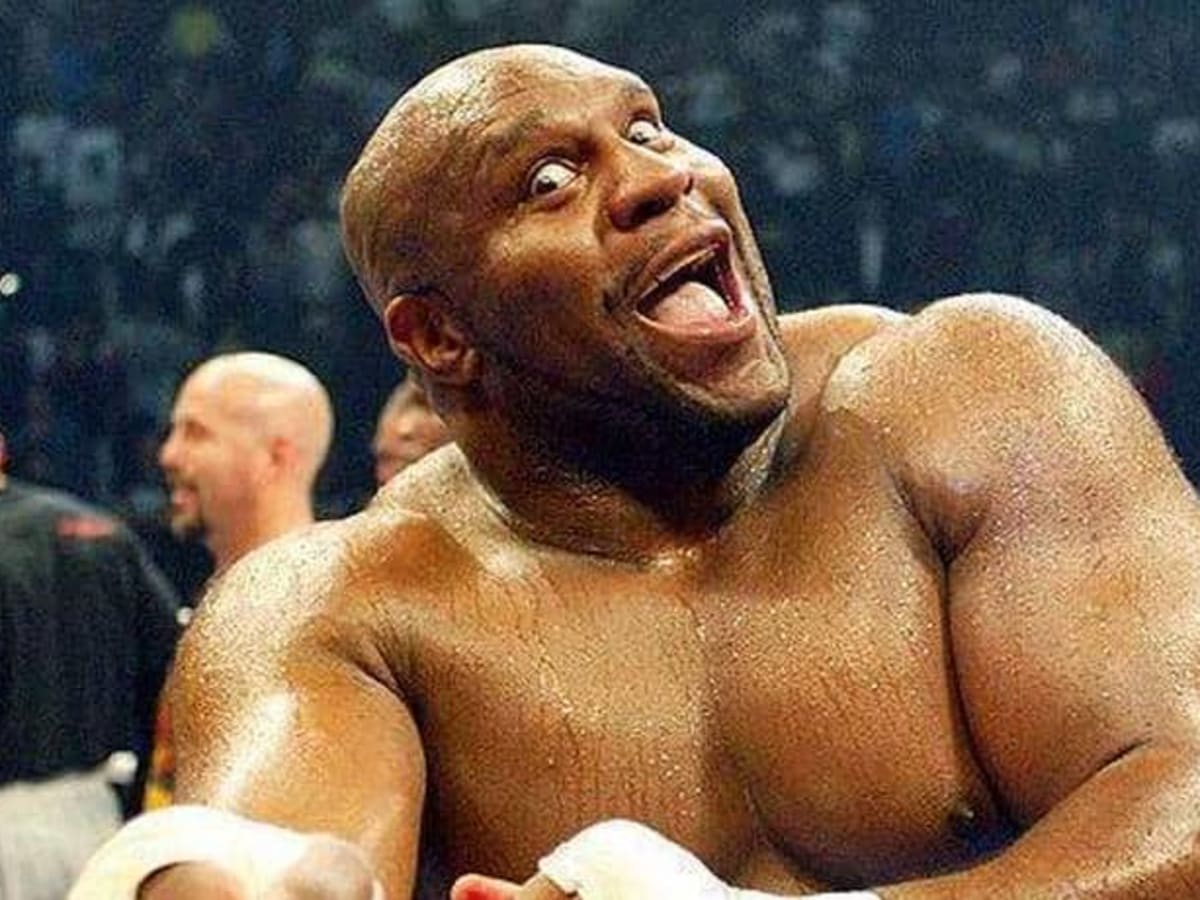
“The Beast” Bob Sapp
The NCW Arena in Cornelia, Georgia, was the location for Bob Sapp’s pro-wrestling debut in 2000. He would compete under the ring name “The Beast,” sporting a Tarzan-like gimmick, for NWA Wildside.
Sapp was treated as a developmental talent, possessing little to no experience in the ring or in any form of combat sport. He wrestled similarly to other NFL-turned-pro-wrestler talents, using their size and strength to run over their opponents.
WCW liked what they saw and quickly snapped Sapp up to a developmental deal of their own, yet, much like Sapp’s other endeavors, it was cut short before he could make any impact.
When WCW were bought out by Vince McMahon and the then WWF, Sapp was not retained.
A New Type of Ring
With wrestling firmly in his rearview mirror, or so he thought, Bob Sapp found himself in an amateur boxing match for FX’s new show where competitors from various sports would compete against each other – The Toughman Competition.
Sapp’s debut came in 2002 against fellow Chicago Bears alumni William “The Refrigerator” Perry in which Sapp knocked Perry out in the second round.
Despite Sapp’s lack of experience, the sheer power of his strikes alone were enough to attract interesting from martial arts promotions in Japan.
The chairman of Japanese kickboxing promotion K-1 invited Sapp to be one of their representatives after seeing his successful bout in the US.
This allowed Sapp to get the vital training he needed in the build-up to his debut for K-1 at Pride. Sapp would be successful in this bout, defeating a pro of seven years, Yoshihisa Yamamoto, by TKO (technical knockout).
Sapp’s debut in Japan was well received by the Japanese fans, and the fight attracted viewers in the eight-figure bracket. If his showing in his first fight was a anything to go by, then Sapp would be a star in no time.
That being said, his second fight did not go the way many expected, yet Sapp’s popularity skyrocketed because of it.
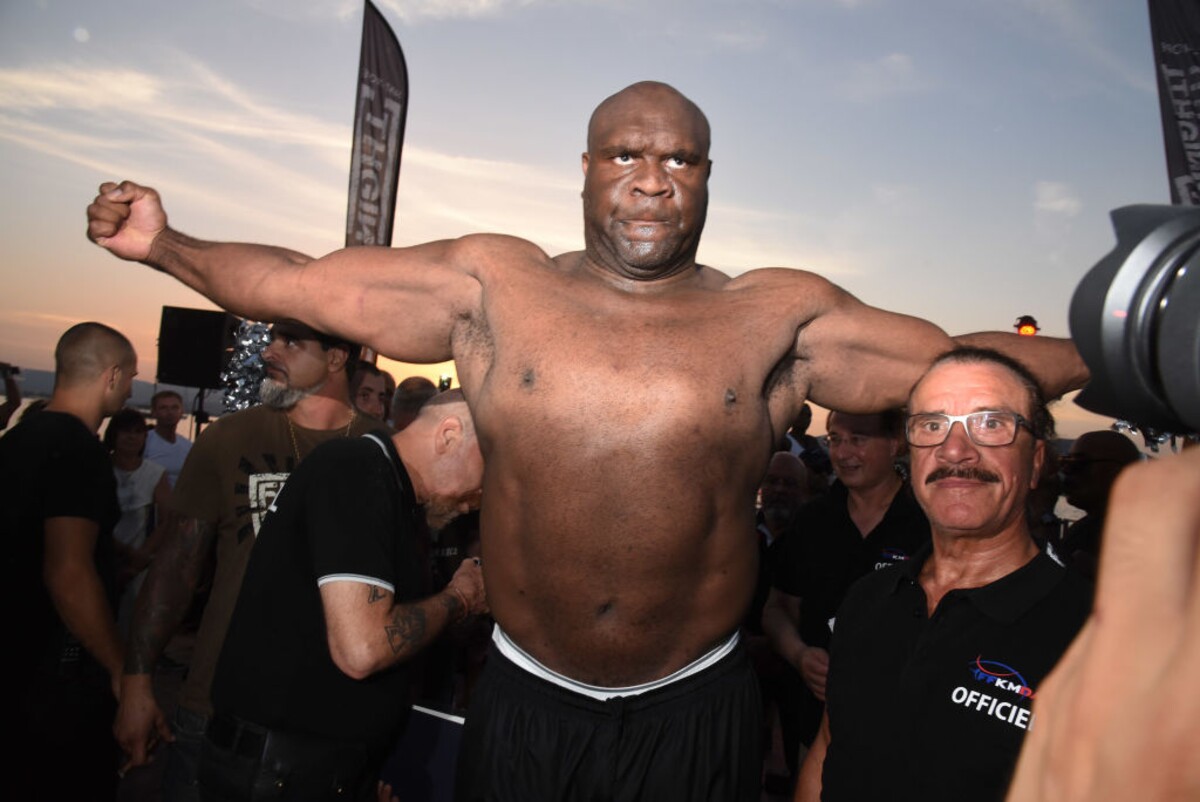
This caused a mass brawl to break out when each fighter’s respective cornermen jumped in to protect their fighters from the other. Usually, such an act would be frowned upon, but Sapp was met with cheers from the fans who loved what he did.
From that moment on, Sapp’s status as K-1’s most popular fighter was undisputed; he appeared on numerous shows and advertisements across multiple television channels.
Success came quickly for Sapp in K-1; victory would again be in his grasp when he defeated two-time RINGS Openweight Champion Kiyoshi Tamura in eleven seconds, and soon after, he would step in for Mark Hunt to face “Big Nog” Antonio Nogueira for Nogueira’s Pride Championship.
Decorated martial arts champion Mirko Cro Cop said that Sapp’s match with Nogueira was “the craziest fight he had ever seen,” and for good reason. The submission specialist, Nogueira had a hard time getting any of his holds on Sapp.
Each time Nogueira went for an armbar, Sapp would power out of it and rain down strikes. Each time Nogueira went for a triangle choke, Sapp would rise up and try to drop Nogueira with a powerbomb.
In the end, Sapp succumbed to one of Nogueira’s armbars, too tired to break free. Many, including Sapp himself, petitioned for a rematch, but Big Nog, who came out of the fight with two broken cheekbones, rejected the idea.
Following his loss to Nogueira, Sapp would round off his year in martial arts with four wins in a row, though it would not be Sapp’s final time inside of a ring that year.
Big In Japan
The legendary Antonio Inoki signed Bob Sapp for New Japan Pro Wrestling to be a part of his Inoki Army.
The Inoki Army consisted of mixed martial arts professionals due to Inoki’s affinity for the sport, and Bob Sapp, with his overwhelming popularity and charisma, was a no-brainer for Inoki to bring in.
Sapp made his debut at The Spiral, an event held in front of 50,000 in the Tokyo Dome, as a late replacement against Manabu Nakanishi, defeating him via countout after giving Nakanishi his “Beast Bomb” on the ring apron.
New Japan were not the only ones interested in Sapp. A month after his New Japan debut, Sapp debuted at a Wrestle-1 event co-promoted by K-1 and All-Japan Pro Wrestling in Yokohama.
To everyone’s surprise, he pinned the Great Muta with a diving headbutt. He would compete for All-Japan again in a tag match alongside multiple successful tag matches for New Japan with Shinsuke Nakamura & Keiji Muto.
With only one singles match under his belt in Japanese Pro Wrestling prior to New Japan’s King of Sports event in 2004, just how did Bob Sapp find himself at the top of the card as the number one contender for Kensuke Sasaki’s IWGP Heavyweight Championship?
The answer? Mike Tyson.

To fill the gap left by the injured Sapp and the departing Cro Cop, K-1 sought to sign Mike Tyson to a contract.
The bankrupt Tyson would have benefited financially from a bout with Sapp in Las Vegas, and it would’ve given Sapp the chance to elevate his career even higher and get back on the right track.
Sadly, the bout never materialized as Tyson failed to obtain a Japanese visa. The idea that Sapp could stand with a legend like Tyson was still beneficial to Sapp’s popularity, regardless of whether the fight took place or not.
Now, Bob Sapp was the most popular of Inoki’s MMA stars in New Japan and, for Inoki, the ideal choice to make his IWGP Heavyweight Champion.
Then champion Kensuke Sasaki had only just picked up the title sixteen days prior to King of Sports from Hiroyoshi Tenzan, but Inoki deemed it the right time for Sapp to claim the belt.
Sapp entered with Makai Club at his side. Makai Club’s gimmick was that its members worshipped Inoki as a God and thus sought to exert his will over New Japan Pro Wrestling.
It was no secret that Inoki’s will involved making top MMA stars big in New Japan, so it was only right that the group aligned with Sapp for the night. Sasaki entered with his wife, Akira Hokuto, at his side.
The match was billed as a David vs. Goliath type of match if David had a steel chair and Goliath had God on his side. Sasaki hit Sapp with everything possible, but Sapp withstood it all and finished Sasaki off with a lariat.
The reign of Bob Sapp as IWGP Heavyweight Champion was short. He successfully defended the belt against Shinsuke Nakamura at Nexess in May before vacating the title due to a loss he suffered to Kazuyuki Fujita in K-1.
As both competed for New Japan, it was seemingly deemed that Sapp needed to vacate the title, allowing Fujita to pick up the vacant belt days later.
Two months after he vacated the IWGP Heavyweight Championship, Sapp entered into the WRESTLE-1 Grand Prix Tournament. The tournament featured a number of pro wrestlers who had also competed for Pride, K-1, and the like.
The Great Muta, Akebono, Don Frye, and Minoru Suzuki were just some of the names in the tournament. Nevertheless, these pro-wrestling/MMA fusion matches were overshadowed by the more entertaining puroresu-style matches dotted around the card.
Mil Mascaras & Terry Funk vs. Tomoaki Honma & Katsuhiko Nakajima and Kaz Hayashi vs. AJ Styles were standouts on night one.
Sapp defeated Giant Bernard in the first round and Jun Akiyama in the second. However, the tournament did not conclude as Wrestle-1 was disbanded before the final.
Even with his pro-wrestling success, Sapp would continue to compete for K-1 for a number of years after his IWGP Heavyweight Title win.
It was K-1 that would stop Sapp from signing with other wrestling promotions, such as the WWE and TNA, as he was one of K-1’s exclusive talents that could only compete for pro-wrestling companies that K-1 had a good relationship with, like All-Japan.
Jonathan Snowden of Total MMA reported that WWE were considering hiring Sapp for a rivalry with Chris Benoit, though Sapp’s contract with K-1 did not allow him to compete for WWE.
In 2006, the relationship between Sapp and K-1 soured for reasons not entirely in the public eye.
Sapp was supposed to face four-time K-1 World Champion Ernesto Hoost in Hoost’s home country of the Netherlands for Hoost’s retirement match, but Sapp pulled out over alleged payment disputes, which K-1 refuted.
Sapp had two more matches for K-1 in 2007 before his contract was finally up; he went out with a win over Bobby Ologun, a comedian turned MMA fighter.

After the Gold
Free from his contract with K-1, Sapp turned up at Korakuen Hall for Nobuhiko Takada’s Hustle promotion. The aim of Hustle was to bring the sports entertainment style of pro-wrestling to Japan, a move away from the puroresu and MMA styles that dominated the bigger promotions.
Hustle pitted their babyface faction of the same name against Takada’s (or Generalissimo Takada as he was called in the ring) heel faction, Monster Army. Sapp would join Monster Army and go on to feud with Akebono under the promotion’s banner.
Sapp’s first pro-wrestling loss since before his New Japan run came to Wataru Sakata, and he then lost in the Hustle Grand Prix to Zeus before a short rivalry with Genichiro Tenryu brought an end to his time with Hustle.
Sapp would return to New Japan Pro Wrestling for a number of one-off events in 2013 as well as appearances for Zero1, DDT, and a revived Wrestle-1.
However, Sapp’s longest stint in a single pro-wrestling company would come with the Inoki Genome Federation (IGF).
In 2007, Antonio Inoki left New Japan Pro Wrestling to start another company which, as one may have guessed, highlighted mixed martial arts performers turned pro-wrestlers and pro-wrestlers with some form of martial arts background like Brock Lesnar and Kurt Angle who faced off in the promotion’s maiden event.

The crowd in attendance at the event were told that Sapp had “lost his will to fight” when he pulled out of the fight due to contract disputes.
In spite of the dispute, Sapp spent five years with Inoki’s IGF, where he wrestled in China and even North Korea for the promotion. His popularity sustained in both countries, which, given the view of America and Americans in North Korea, is quite something.
Inoki held a similar set of events in North Korea with WCW in 1995, where only Inoki, a student of Rikidōzan, got a reaction from the fans.
Somehow, Sapp had repeated that feat. He handed out cookies to North Korean children and even let them beat him in an arm wrestle and a tug-of-war.
It was clear for all to see that Antonio Inoki had some faith in Bob Sapp, if not as a professional wrestler, then as a draw for fans in Japan and elsewhere.
Whether Inoki realized how big a deal it was or not, it doesn’t take away from the fact that he bestowed upon Sapp the honor of being the first African-American Heavyweight Champion in New Japan Pro Wrestling.
Inoki also made Sapp one of his key people on his diplomatic mission to North Korea and evidently must have had some trust in Sapp to represent Japan, pro-wrestling, MMA, and the United States in a setting crucial to future relations between North Korea and Japan.
Sapp’s MMA career continued up until 2018 even though Sapp appeared to phone in a number of his bouts in an effort to preserve both his health and wealth after retirement. In 2012, Sapp spoke with Ariel Helwani on the MMA Hour and stated the following:
“Am I throwing these fights? No, I will receive no damage to my body that will be long lasting for a small insignificant amount of cash.
I think we’ve seen that now with examples with the NFL and the fact that some of these guys are coming back and saying, ‘Hey we want some money, we have brain damage.’
I’m getting paid well underneath what a professional boxer would, or Manny Pacquiao. So I will, in no means ever, will I sustain long-lasting damage for a small paycheck.
Never will that happen, never will ‘The Beast’ ever have that happen.”
However, this hasn’t stopped Sapp from occasionally getting back in the ring for more bouts. In 2020, Sapp was scheduled to face Mike Tyson in a match seventeen years in the making, but once again, the fight failed to materialize.
Outside of the Ring
Sapp didn’t just bring his charisma to the ring and the microphone. In 2003, he starred in a self-titled short film, “Bob Sapp: Sapp Time The Movie!”
The movie covers the creation of a music video produced for Bob Sapp to use as part of his pro-wrestling entrances and features Bob Sapp singing and dancing in extravagant suits to his own theme.
It runs closer to a celebrity hype video than a documentary and is one of the more bizarre things witnessed in pro wrestling, considering Sapp’s dominant look and MMA career. The song Sapp Time! was then released as a J-Pop CD to little success.
2005 was Sapp’s biggest year on the big screen. He first starred in Marvel’s Elektra, where he faced Jennifer Garner’s hero as Stone, a villainous lackey with superhuman strength and impenetrable skin.
After that, Sapp went back to his roots in Adam Sandler’s American football-themed movie The Longest Yard, which also starred fellow wrestler and big man The Great Khali.
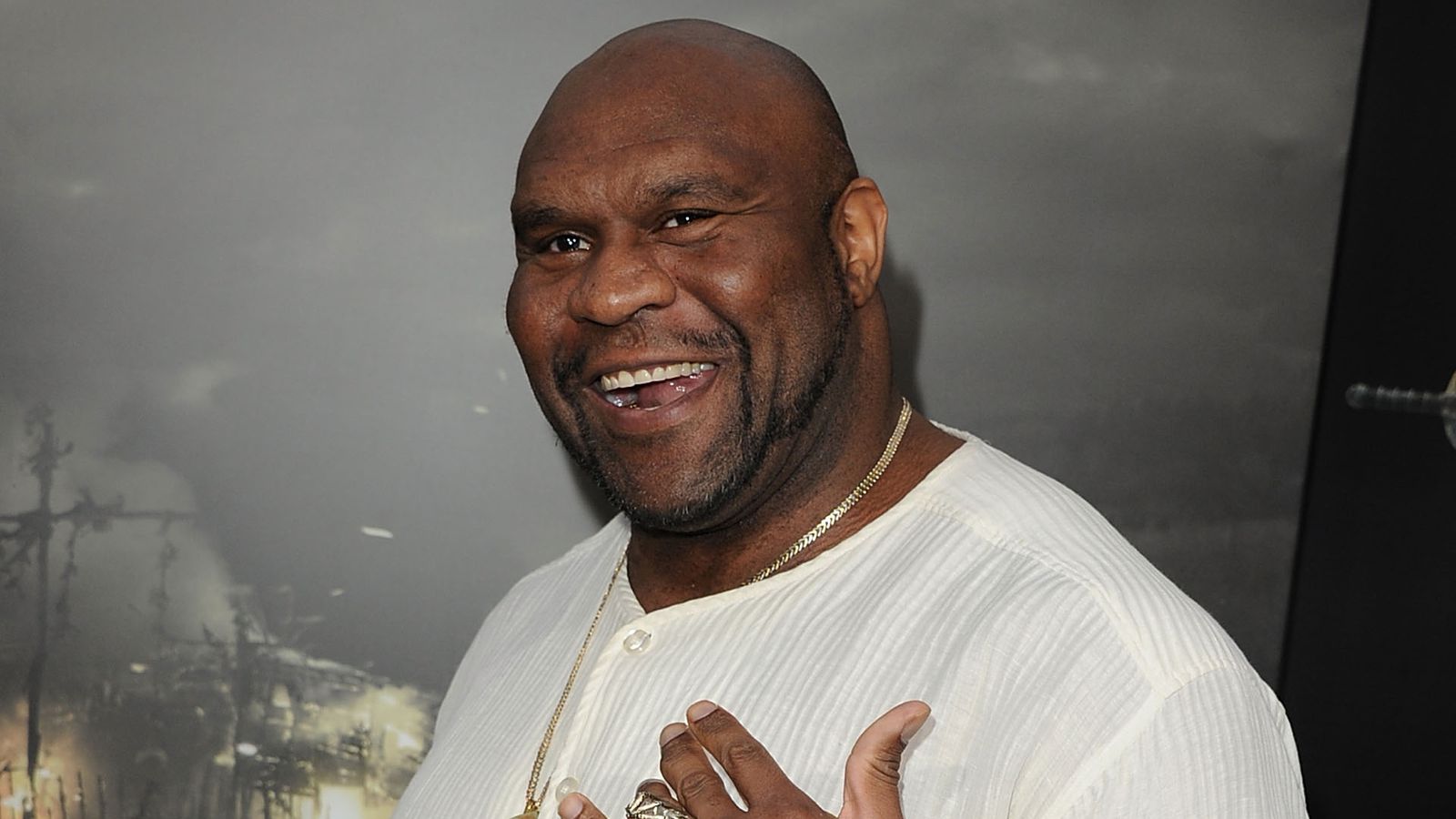
The Legacy of Bob Sapp
Bob Sapp was one of sport’s biggest anomalies. Not meant for the world of American Football and rejected by pro wrestling in America, Sapp capitalized on his strengths in the east and became a protean icon in Japan.
Sapp had the size, the look, and the charisma to make it in the business whether he was skilled or not; he just needed the right platform to showcase himself on.
There aren’t many who can claim to be built like Bob Sapp in the US, and there was absolutely no one who looked anything like Bob Sapp in Japan. Combine that rarity with a confidence and willingness to entertain, and you get an aura that nobody could replicate.
But was pro-wrestling the ideal space for Bob Sapp, given his skillset? He could pull in a crowd and even speak a fair amount of Japanese. In his prime, he was a legitimate problem for some of the world’s most decorated fighters.
Be that as it may, Sapp did not possess the in-ring abilities of his puroresu or MMA counterparts in any of the promotions he competed in.
Perhaps Sapp would have been better suited to the US scene after all. There he would have likely had the chance to play on his abilities as an entertainer instead of an out-and-out athlete while still being billed as a monster heel or even a face with the right handling and a few more bright suits.
We can’t rewrite history and it’s disappointing that the reign of the first-ever African-American IWGP Heavyweight Champion came about so sporadically and went away just as quickly.
There was potential there to use Sapp as the monster heel at the top of New Japan as the kingpin of Inoki’s MMA Army against the roster, but it was cut heinously short.
Sapp made history and, through no fault of his own, his place in the spotlight at the top of Japanese pro-wrestling was taken away as mixed martial arts took precedence over the sport that the IWGP Heavyweight Championship was made for.
